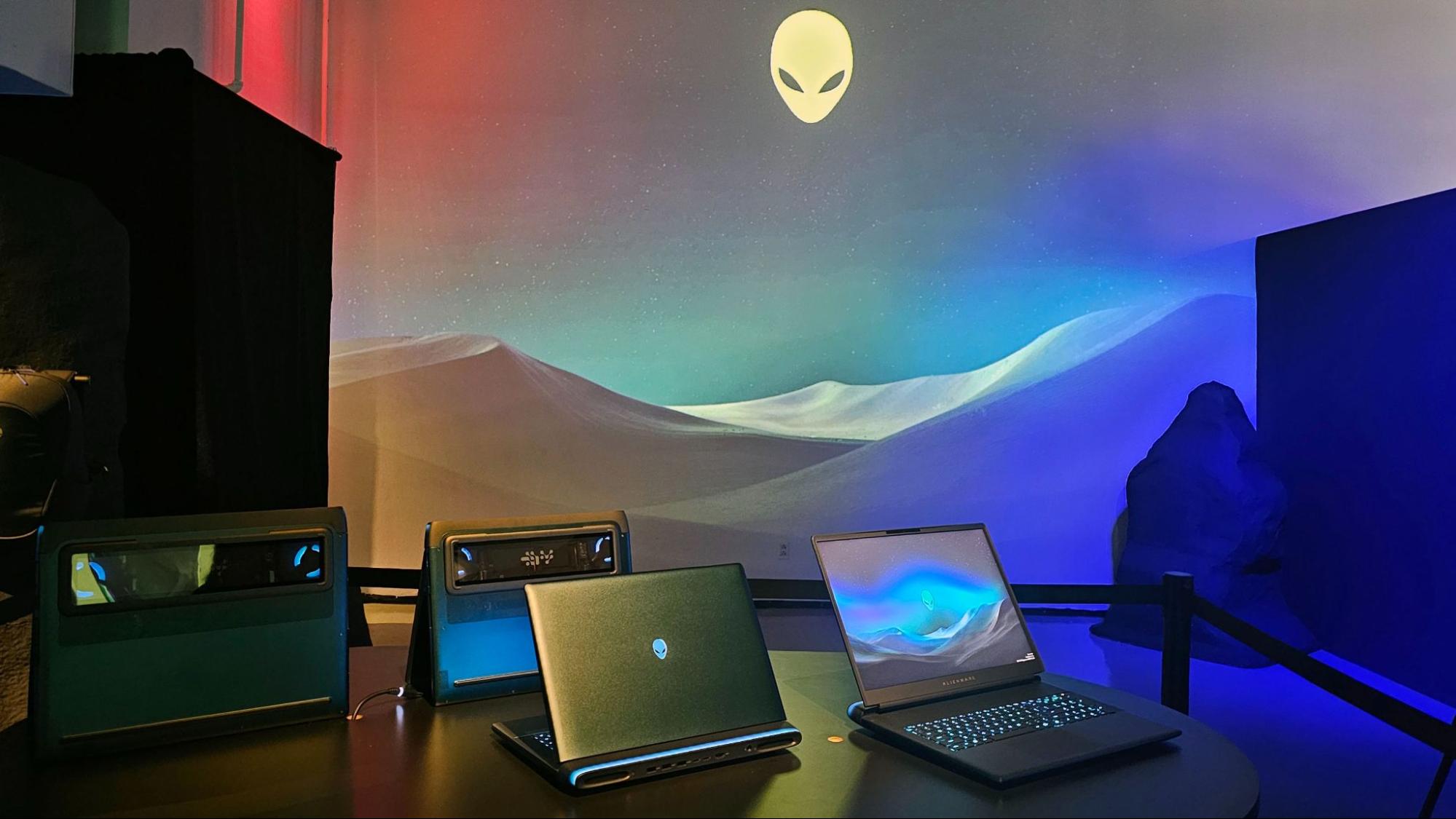
It’s been six years since we last saw an Alienware Area-51 device, but Dell is bringing its flagship gaming sub-brand back in a big way for CES 2025, with color-shifting 16- and 18-inch laptops, complete with a glass window on the bottom (to better see its internal RGB fans), and a monstrous full-tower gaming desktop with support for cooling the most power-hungry next-gen components.
Area-51 16, Area-51 18 gaming laptops
The 16- and 18-inch laptops sport a new “AW30” external design named for the company’s 30th anniversary – curious considering the company was founded in 1996. This includes a striking “liquid teal” color-shifting anodized shell and a “thermal shelf” bump behind the screen that houses cooling hardware and ports, surrounded in typical Alienware fashion by a diffused RGB light ring. The touchpad is also RGB-lit, and the per-key RGB keyboard features Cherry MX mechanical switches.
In a first, Alienware has added a Gorilla Glass window on the bottom of the laptop and RGB fans that shine through, giving the laptop an underglow while you game or work. You can also faintly see the lighting from the fans from the top while looking down through the vents.
Details on graphics options were scarce when we wrote this, but it’s likely both models will support up to an RTX 5090, as Alienware touts the laptops’ “highest total power ceiling in a gaming laptop” with up to 175W for the GPU and 105W for the CPU simultaneously, for a total of 280W. How well (and how noisily) the laptops handle those extreme loads of course remains to be seen.
CPU support is listed as up to a Core Ultra 9 275HX CPU, RAM up to 64GB DDR5-6400 (and XMP support up to 72000), and storage up to 12TB – with one of the M.2 slots supporting PCIe 5.0 drives.
As you might have guessed, these laptops aren’t thin or light, even compared to other gaming laptops. THe Area-51 16 is 1.12 inches thick at the back and tops out at 7.6 pounds, while the larger 18-inch model is 1.2 inches thick and weighs 9.82 pounds fully specced out.
When we saw the laptops ahead of CES, they were under very low lighting, and the press shots the company provided were under the same lighting conditions, so it’s still a little unclear how they’ll look in the light of day. But the design is still very much in the typical Alienware realm, with the iconic head on the lid, and lots of curved edges. If you’re an Alienware fan, chances are you’ll like how these laptops look.
Dell says its Alienware Area-51 laptops will be available sometime later in Q1, with entry configurations expected to land around $1,999. But if you want one at launch, that model will set you back around $3,199, with a “high-end, next-gen” Nvidia GPU.
Area-51 Desktop
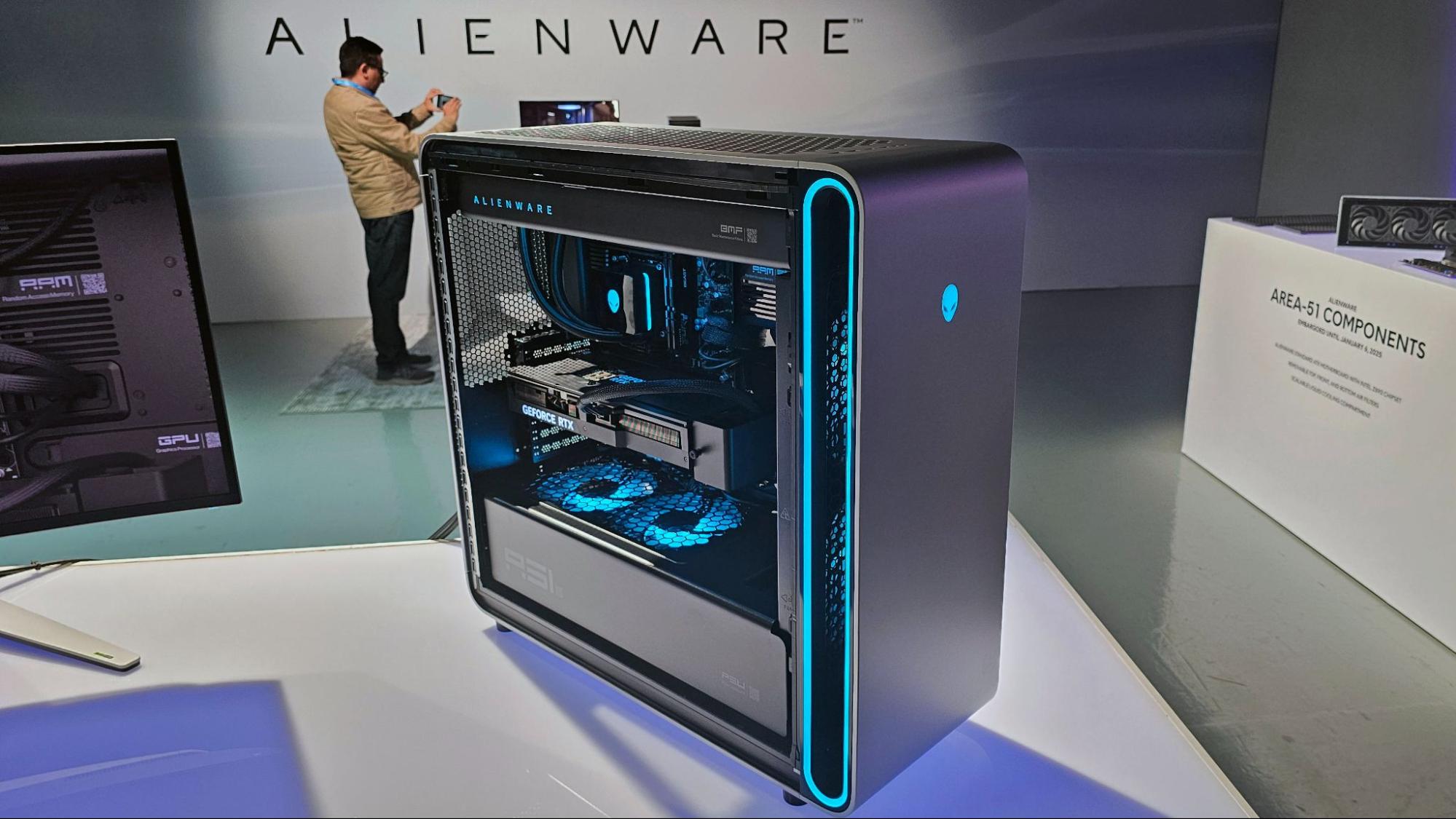
At 22.4 inches tall, 24.04 inches deep, and weighing in at a minimum of 76 pounds, the new Area-51 desktop is a big, bold gaming rig with a rounded metal exterior and a front light ring, borrowing much of its exterior design for the Aurora R16. As you would expect from an Area-51, top-end components will be supported, including GPUs up to 4 slots wide and 17.1 inches long, PCIe 5.0 storage, and 360mm AIO cooling (with room for an even larger 420mm radiator in the top chamber).
Interestingly, all of the system’s fans are intake, relying on positive pressure to move warm air out of the back. The company says this lets the system run 13% cooler and 45% quieter, though we’ll, of course, have to wait for testing to see how cool and quiet the rig actually is.
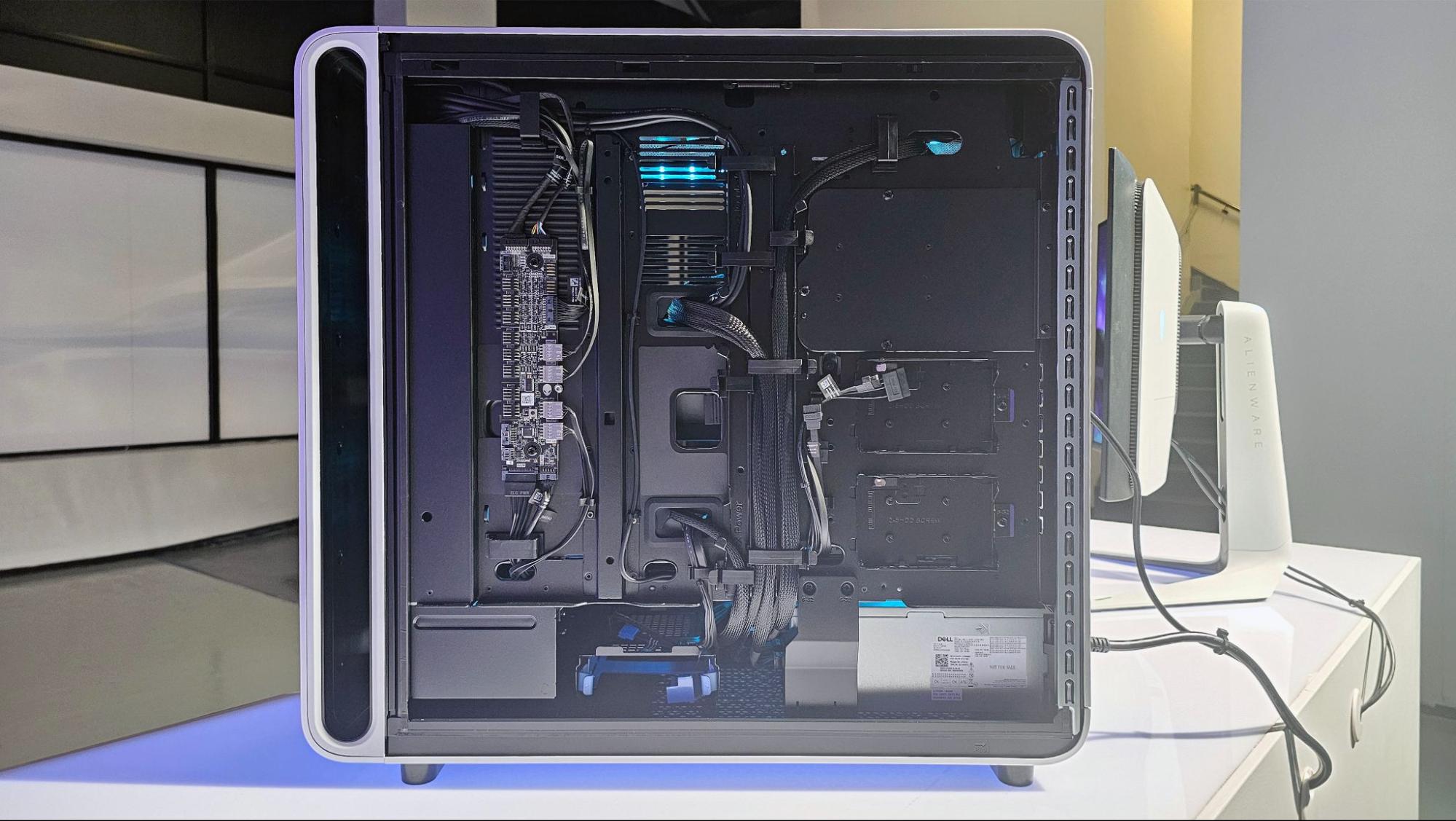
My favorite aspect of the Area 51 is its use of a standard-sized ATX motherboard (supporting Intel’s Core Ultra Arrow Lake CPUs) and ATX power supply, making future upgrades easier. And for those who aren’t particularly confident in their DIY PC skills, the company has also printed several QR codes at key spots inside the case, so you can bring up how-to videos to aid the upgrade and maintenance process.
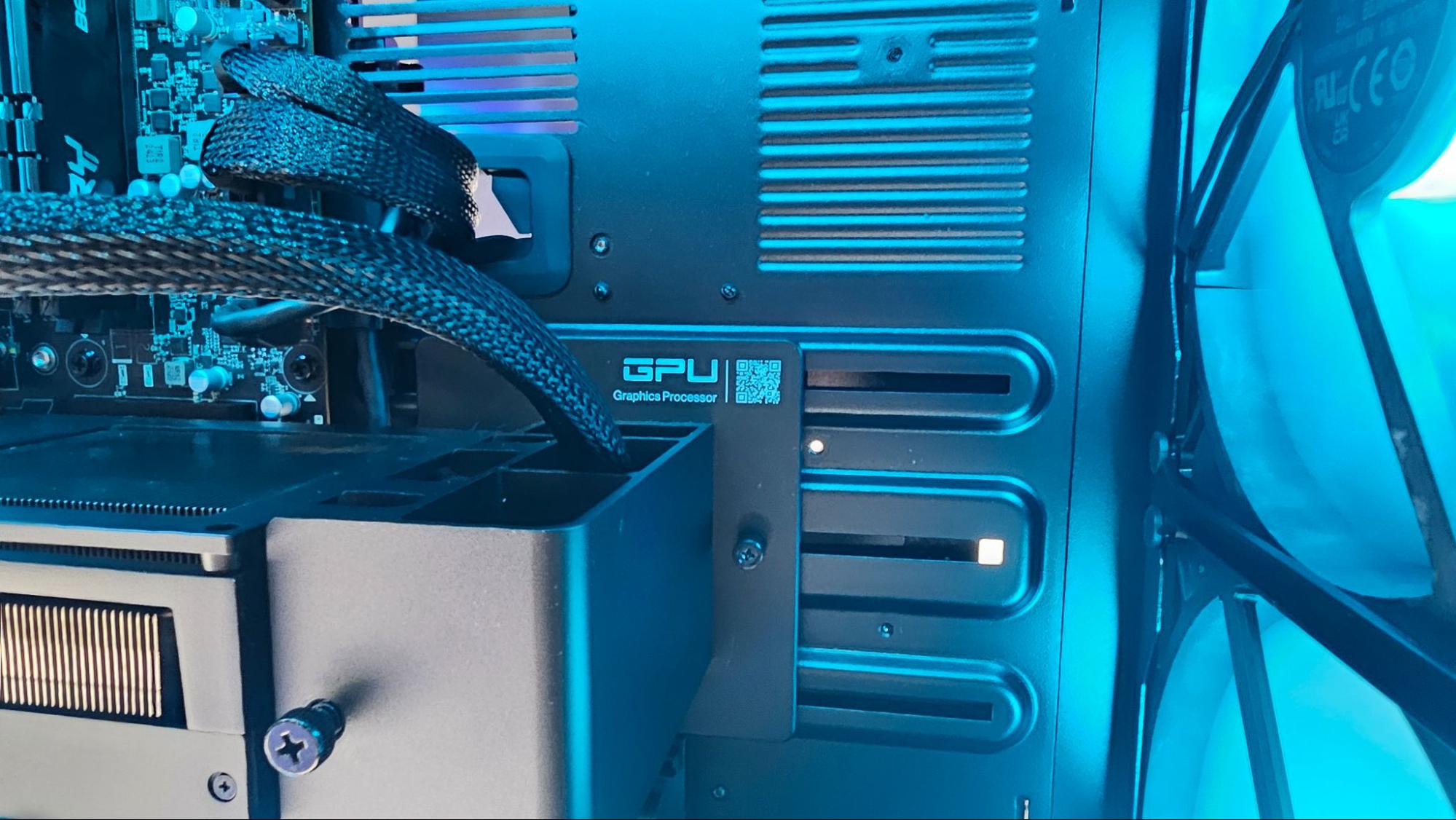
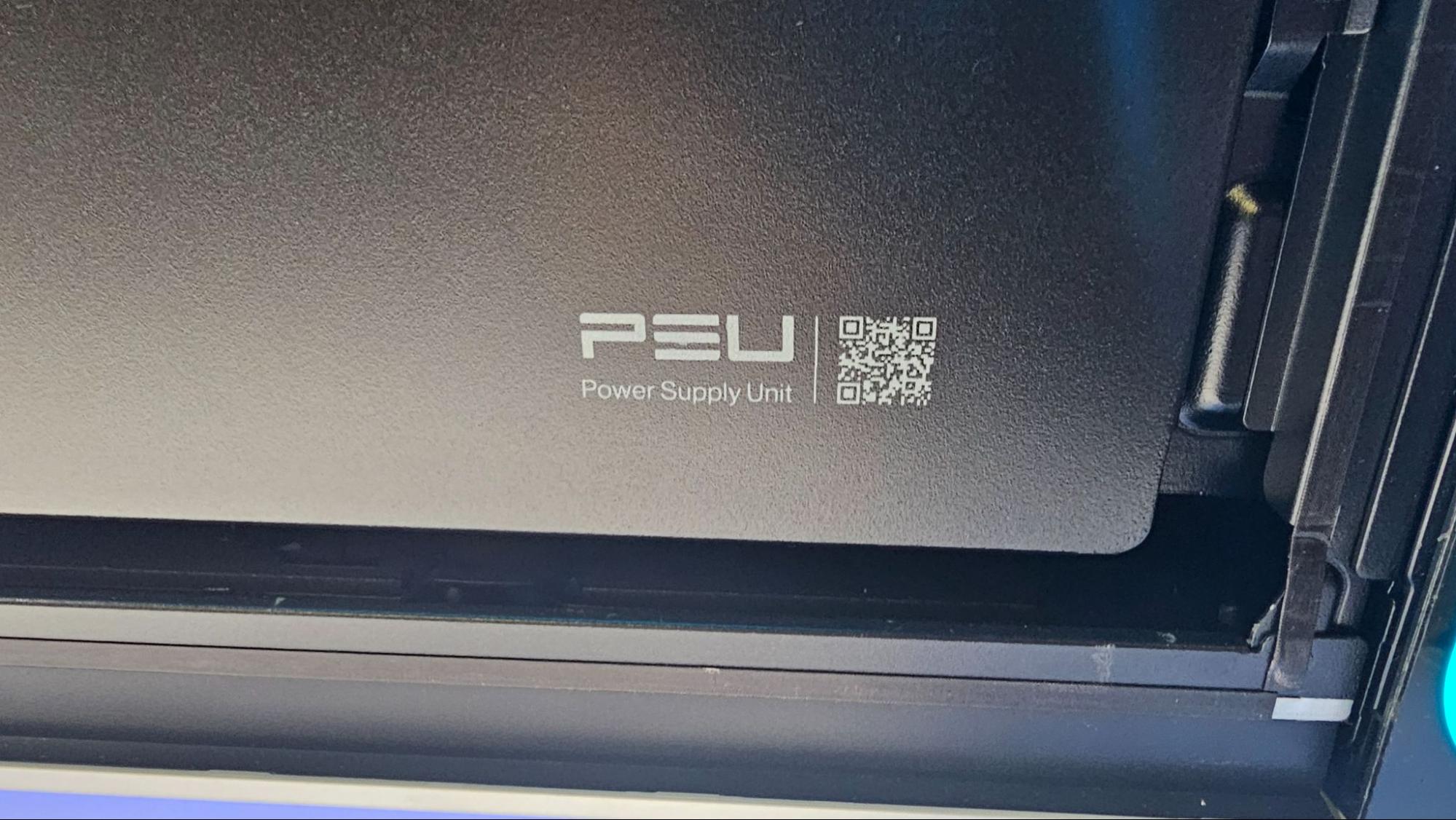
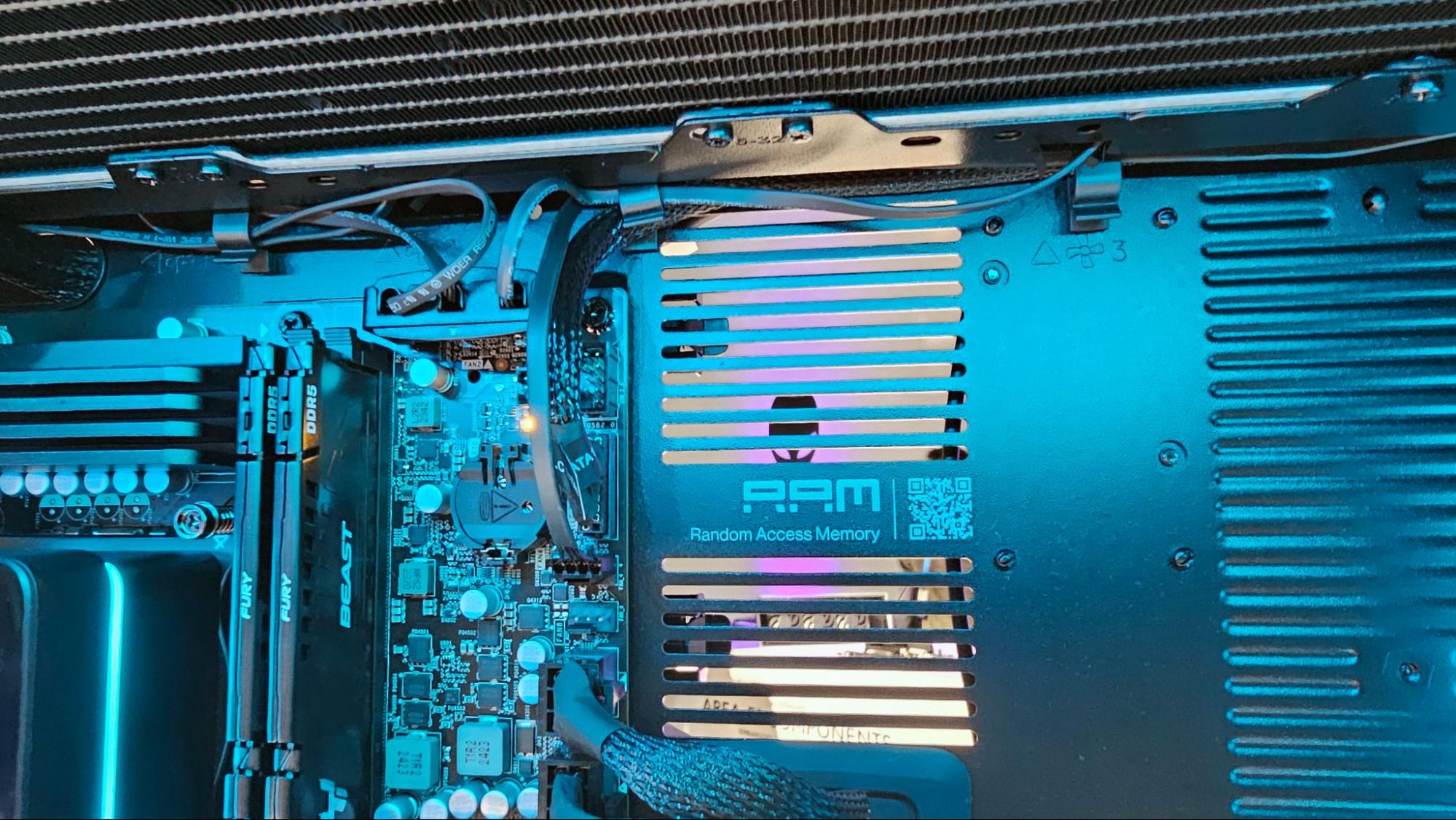
The chassis looks nice and feels premium, though it would be nice if there were fewer visible seams. I’m happy to see the company move to more standard parts though, a direction that HP’s competing Omen line has been moving toward for a few years now. Hopefully, we’ll see that trend trickle down to the company’s more mainstream Aurora line.
The Alienware Area-51 desktop should be available in Q1 of this year. Starting price is still up in the air, but the company says a launch configuration with a “high-end, next-gen” Nvidia GPU will set you back $4,499. How that stacks up to similarly equipped desktops from other PC makers remains to be seen, but you can probably expect the usual Alienware price premium.







